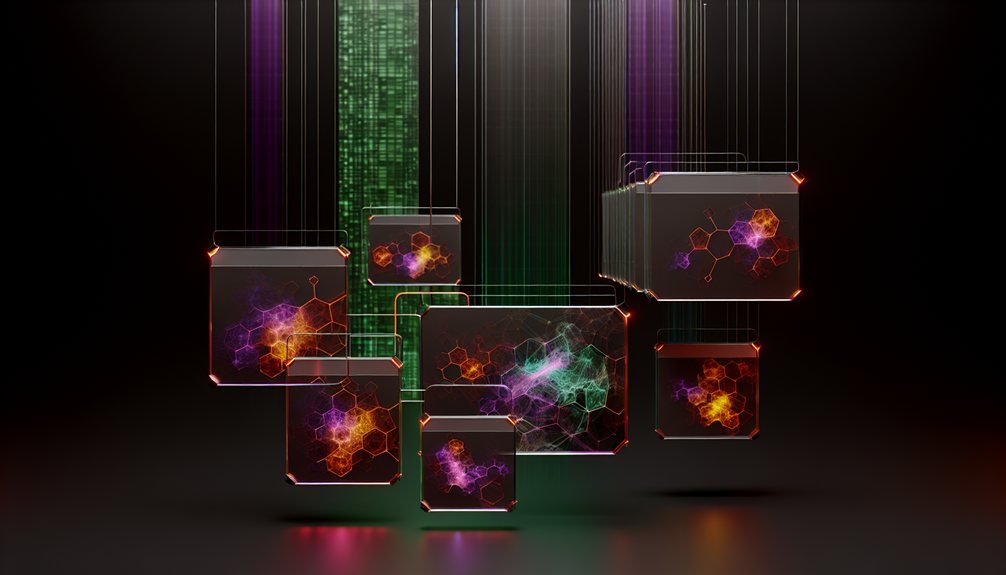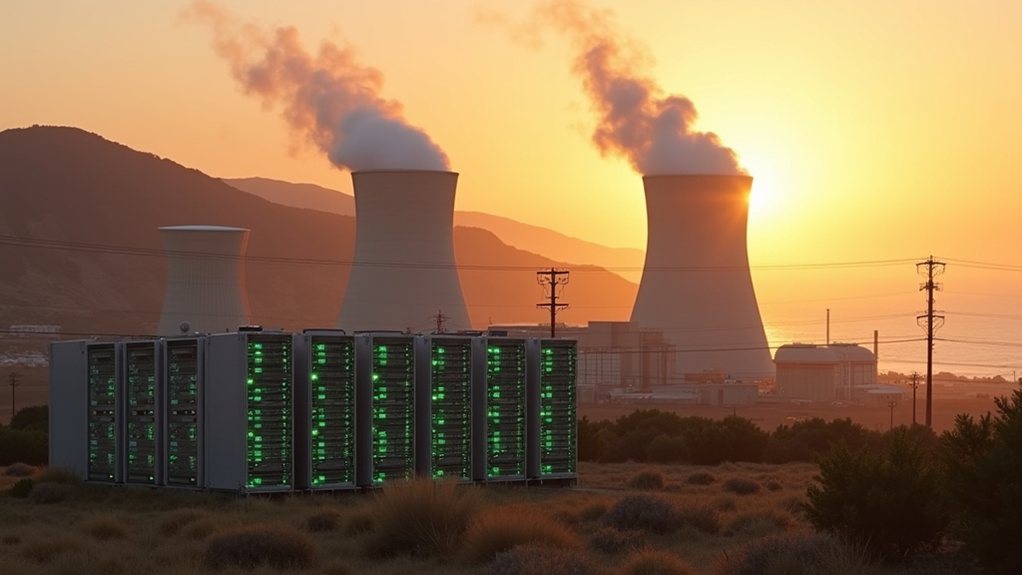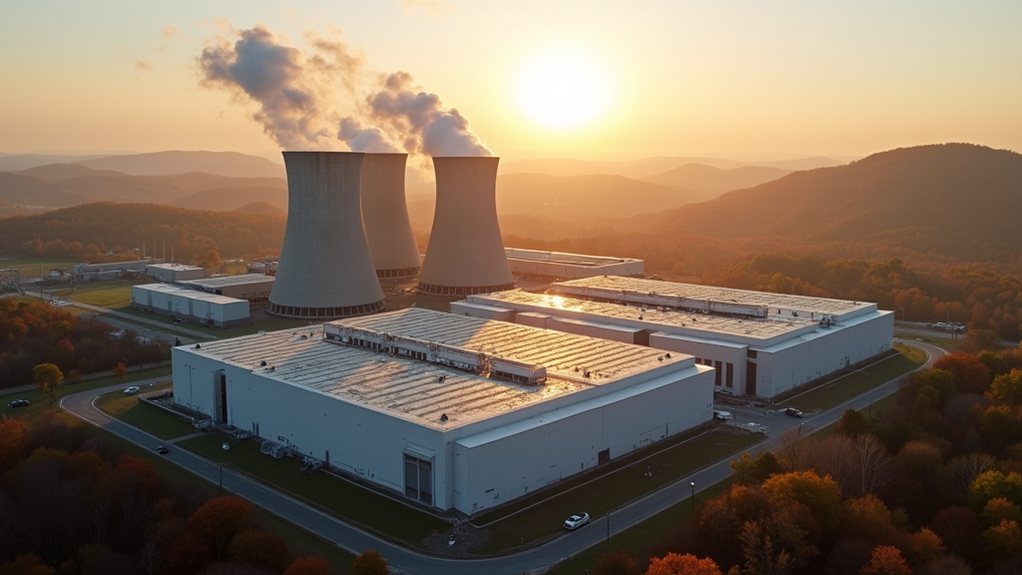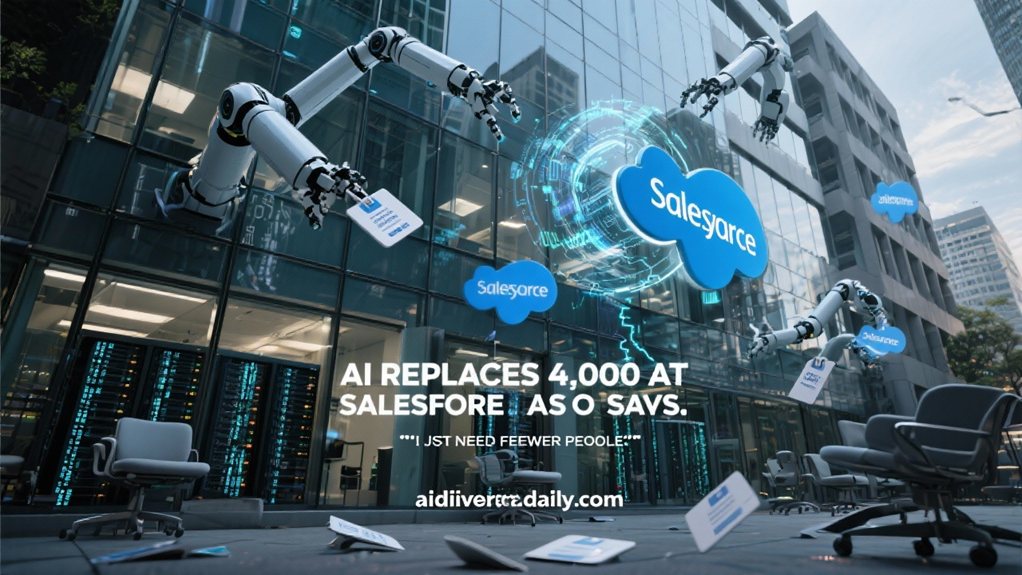While tech enthusiasts celebrate AI’s rapid evolution, few are talking about the massive energy bill coming due. Data centers—those humming warehouses of servers powering our digital lives—are about to double their electricity consumption by 2030, gobbling up a projected 945 terawatt-hours. That’s not small change.
Let’s put this in perspective. Right now, these digital powerhouses consume about the same electricity as the entire airline industry—1 to 2% of global demand. But throw AI into the mix, and things get wild. Those fancy generative models everyone’s playing with? They’re energy hogs. GPT-4 doesn’t run on hopes and dreams.
The numbers are sobering. AI data center energy use is growing at a staggering 44.7% annually. By 2027, we’re looking at 146.2 TWh just for AI operations. Someone’s got to generate all that power.
AI’s hunger for electricity isn’t slowing down—44.7% annual growth means we need serious power, and fast.
Tech companies are scrambling. Renewable energy partnerships? Check. Fancy cooling systems? Absolutely. Carbon-aware software? Why not. But these solutions only go so far when demand keeps skyrocketing. Companies implementing predictive algorithms for demand forecasting are finding ways to optimize energy usage while maintaining efficiency.
Grid operators are sweating bullets. Their infrastructure wasn’t built for this kind of surge. And it’s not just about capacity—it’s reliability. AI data centers can’t exactly take power naps during outages.
There’s also the not-so-small matter of critical minerals. All those servers and power systems need rare earth materials. Supply chains are already stretched thin.
The irony? AI might actually help solve some energy problems. It’s accelerating innovations in solar technology, battery storage, and grid management. But that’s cold comfort when your local utility is struggling to keep up with demand.
Costs are rising, too. Running these digital brains isn’t cheap, and someone will end up paying the bill. Probably us.
The bottom line: AI’s brilliant future depends on solving some very tangible energy problems today. Creating a single image with generative AI consumes smartphone charging equivalent amounts of energy. The industry needs to face reality—algorithms don’t run on air, and our current power systems aren’t ready for what’s coming. In the US, these digital hubs will be responsible for almost half of all electricity demand growth by 2030.









